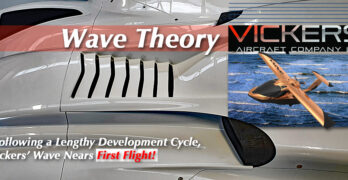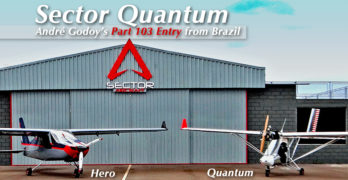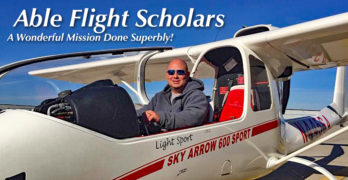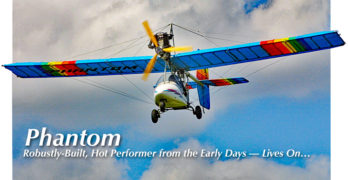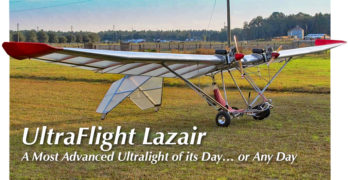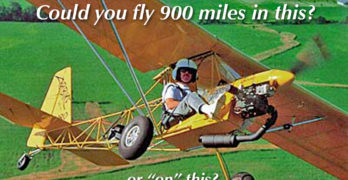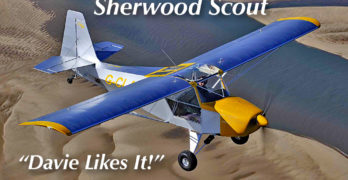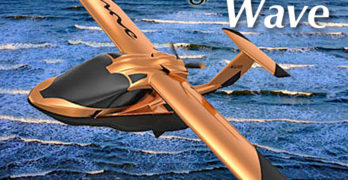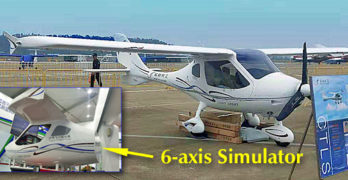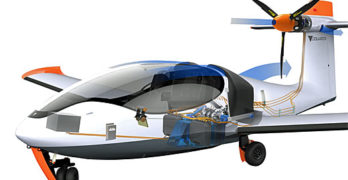Down under, heads are down and wrenches are wrenching. A team in New Zealand has been working for years on what might be the most sophisticated new aircraft to emerge …well, anywhere among Light-Sport Aircraft but certainly in LSA seaplanes.
Look out, Icon A5! Here comes Wave and it should be quite exciting.
Designer Paul Vickers (see video interview below) has a history in boat-hull design. This history forms a logical path to a LSA seaplane with its boat hull and water control features. Paul employed that experience but has widened his history to encompass a flying boat, the Wave.
From the images that accompany this article, you may see a artist’s sense of style, an engineer’s focus on efficiency, and a creator’s close attention to detail. I think these fresh photos convey those qualities quite well.
Visual Clues
We can pick up a few clues from these “teaser photos.” (Somebody appears to know a thing or two about taking intriguing photos.)
In one image you notice the Rotax 915iS hiding inside its shapely engine nacelle.
Search Results for : Flight Design
Not finding exactly what you expected? Try our advanced search option.
Select a manufacturer to go straight to all our content about that manufacturer.
Select an aircraft model to go straight to all our content about that model.
Quantum Development… Brazilian Part 103 Ultralight Entry Explained by Designer
Welcome to a New Year! …and to a new airplane, a new Part 103 entry to be specific.
One of the most amazing discoveries of 2020 — the year Covid upset lives around the globe — is the particular and peculiar strength of Part 103 ultralights.
In a year that has seen hundreds of thousands of small businesses fail under the pressure of executive orders, and the lockdown of an amazing percentage of the world’s individuals, the littlest airplanes have found new life.
Are you surprised? I was… despite being a fan of Part 103s for several decades.
What will happen in 2021 and beyond? No one has a crystal ball but I am going to guess that we will continue to see strength in the 103 segment for one primary reason: affordability.
You Can Afford
Your Own Aircraft
FAA’s Part 103 is an American phenomenon, dating to 1982, when the nearly 40-year-old regulation was issued.
High Value Mission — Flight Training that Meets Special Requirements in Light-Sport Aircraft
American are very gracious with their donations to good causes. Charitable giving in the USA exceeded $400 billion in 2018 alone. Even during uncertain times as the world currently find itself, Americans still prove surprisingly generous. It makes me proud.
I’ve joined in when it comes to Able Flight, having on several occasions given money to Able Flight. For a pilot, I cannot comprehend how a fellow aviator can ignore this worthy effort, lead by founder and main man Charles Stites. He has single-handedly generated funds from numerous donors, found Light-Sport Aircraft with hand controls, lead the effort to select wonderful scholarship winners, and donated so many of his own hours that I’ll bet he can’t even add them up …for sure, it’s a lot of time invested.
You have many, many great organizations you can support but this one, for pilots anyway, should hit very close to home.
Ultralight April 2020 — Seventh in the Vintage Series: Ultralight Flight Phantom
When the Phantom was introduced to the ultralight market at Sun ‘n Fun in 1982, it won the Best New Design award, not only for good looks and strong performance but for its structural integrity! Indeed, it was touted as having been tested to +9 and –6.6 Gs. Though dismissed by some pilots, wire-braced designs are actually very tough.
Phantom is a kit built from anodized aluminum tubing, bolted and riveted together. The wings, tail surfaces and ailerons are covered in Dacron sail cloth envelopes and Phantom used a double surfaced wing for better cross wind control and handling.
A wire-braced, high-wing, tricycle-gear ultralight aircraft in a tractor configuration, Phantom has a pilot pod with windscreen and a steerable nosewheel. (These were not common in those early days of ultralight vehicles.) Controls are standard stick and rudder — a left hand throttle and right hand joystick — with full span ailerons.
Ultralight April 2020 — Sixth in the Vintage Series: UltraFlight Lazair
The first time I ever saw Lazair fly — a fly-in at the Tullahoma Airport, as I recall — a then-young Peter Corley flew the lightweight aircraft as though he was the pilot of a military fighter of the day. He pushed the sleek machine with the whining engines as he looped and rolled the machine with such apparent ease. At this early time of development for these aircraft, such maneuvers in what we called an ultralight were very unusual.
To say either Peter or Lazair was unusual proved something of an understatement. Lazair was, and remains, one of the most unorthodox aircraft of any kind. Several reasons stand out to define its uniqueness.
These differences included: an inverted-V tail, said to be the most efficient tail planform; twin engines (the tiniest ones imaginable); an aluminum structure not based solely on round tubing; and see-through wing and tail coverings. All that is just the overview.
900-Mile-Flight to Copperstate in the Open Cockpit TEAM AirBike. Well done!
Update 2/17/20 — From a commenter whose handle is “Concerned Citizen” on Videoman Dave’s YouTube channel comes this update on Mike’s flight home: “Mike left Copperstate Sunday morning and made three legs, stopping in Blythe, Bermuda Dunes, then Banning due to severe winds and rain. After a two-day layover with strong wind gusts, Mike made a hop to Rosamond, then the next day, an incredible dawn-to-dusk day, flying from Rosamond, near Edwards Air Force Base, to Corning, California! …nearly 500 miles and eleven hours in a single day! The little Rotax 447 was flawless the whole trip. Mike. Is. Da. MAN!” —DJ
Most motorcyclists say 900 miles on a bike is a long trip. Seems reasonable. How about when it’s an aerial motorcycle? …out in the breeze, smelling the air, feeling the hot or cool — hmmm, sounds interesting, doesn’t it?
Meet a man who recently made such a flight, over three days, and taking 17 hours of flight time to reach Copperstate 2020 with his legs out in the breeze (pretty true to the motorcycle metaphor, don’t you think?).
Full Flight Review of Scout from The Light Aircraft Company
Welcome to the two-seat Sherwood Scout. We previously presented Sherwood’s single-place Kub. Now, our favorite British writer, Dave Unwin — master pilot of many aircraft of widely varying types — reviews the UK company’s Scout model. All photos are by UK photographer extraordinaire, Keith Wilson. Thanks to both gentlemen. Enjoy! —DJ
A handsome high-wing, side-by-side two seater, Scout’s lineage goes back to 1983, when Dean Wilson’s trendsetter-to-be Avid Flyer was first introduced.
His often-imitated design was the basis for Kitfox, Rocky Mountain’s Ridge Runner and the Flying K Sky Raider. The latter morphed into the Just Aircraft Escapade.
When The Light Aircraft Company — TLAC — bought the design in 2013 the first thing Paul Hendry-Smith and his team did was implement a significant number of improvements to both its design and construction.
They improved stability, pitch authority, and decreased adverse yaw. After a year of flight testing various revisions, they enlarged both the elevator and rudder, cleaned up the junction between the wing root and flaps, added gap seals and implemented several other aerodynamic tweaks.
Vickers Wave Light-Sport Seaplane Gets a Weight Increase from FAA; First Flight Approaches
It’s big. It’s bold. It’s beautiful. It’s loaded with snazzy custom features. And it’s gonna be powerful.
You might think those words don’t apply to many Light-Sport Aircraft. Certainly, “big” is not a word most pilots associate with LSA. A number are actually rather compact, though with standardized rules, aircraft parameters don’t differ as much as some might think.
Wave is different …at least in one particular way. The newest LSA seaplane in development in the Southern Hemisphere has something special. What is it?
Vickers recently announced winning a weight increase exemption for their deluxe Wave. As other producers wait to read FAA’s coming regulation regarding aircraft size, Wave can begin leveraging their higher gross weight to increase capability and power.
Principal Paul Vickers stated, “After many months we can finally announce that Vickers Aircraft has received our FAA weight exemption for the Wave™ LSA. This will allow a MTOW of 1,850 pounds (839 kilograms), so we can incorporate additional safety features that will set the Wave apart and help us achieve our long-term goal of moving aviation forward.” He added, “Some of these safety features include water maneuvering thruster, CrossOver Landing gear, increased horsepower, and the required fuel capacity to ensure the Wave is operated safely and can perform its mission.”
Paul continued, “We have designed the Wave for this increased MTOW and have incorporated the required additional structure.” He feels this sets up Wave to smoothly transition into the LSA rule changes that are on the horizon, new definitions that will include adjustments regarding the weight of Light-Sport Aircraft.
AeroJones Unveils Their Six-Axis Full-Motion Flight Simulator for CTLS
At a major show in China called Zhuhai visitors saw something: a new 6-axis LSA flight simulator. The developer is AeroJones Aviation, the CTLS manufacturer for the Asia-Pacific region. The company exhibited their simulator to a warm reception.
General aviation is beginning to develop in China lead by airport construction at hundreds of the country’s huge cities. As I’ve written before, I have no doubt the airports will be built, but actual flying at most of them — by Light-Sport Aircraft or other recreational aircraft — seems somewhere off in the future.
China has a massive job ahead. Chinese business people have proven very capable of building many things, but developing a culture of the citizenry flying in light aircraft still has quite a distance to go. However, AeroJones new simulator may help the country take a huge stride forward.
First, Simulate — Then, Go Aloft
Chinese citizens play games, including flight simulators, as much as (or perhaps even more than) Americans do.
Equator Light-Sport Aircraft Seaplane Secures Crowd Funding; Makes First Flight
This article has been updated with a new image; a minor correction was made.
LSA seaplanes have provided some of the most interesting new developments in aviation. Perhaps interest stems from the vast numbers of landable waterways compared to runways. Perhaps it’s the versatility of amphibians. Maybe people are simple drawn by the good looks or unique qualities of entries.
Among the several projects, one of the most fascinating has been the hybrid electric seaplane called Equator P2 Xcursion, from Norway. I have reported on P2 Xcursion before; here’s the earlier article.
Years in the Making
CEO and lead designer Tomas Brødreskift reports the company has invested some 30,000 man-hours into the Equator Aircraft project. An engineer, private pilot, and recreational flying enthusiast, he acquired a passion for flying that most readers know well. Like many of them, he saw in the aircraft he was flying a lack of modern design.
- « Previous Page
- 1
- …
- 5
- 6
- 7
- 8
- 9
- …
- 147
- Next Page »


